
Valley of Genius: The Uncensored History of Silicon Valley (As Told by the Hackers, Founders, and Freaks Who Made It Boom)
by
Adam Fisher
Published 9 Jul 2018
He says, “Well, then here’s where you can connect the telephone cable.” Tony Fadell: And they go, “But Tony-san, where is the modem?” Michael Stern: In the block diagram there was no modem chip. Tony Fadell: I said, “In software.” Steve Jarrett: They all look at each other and one of them says, “Honto desu ka?” which is “Can it be true?” The other guy just kind of shrugs his shoulders. Then they immediately just start yelling at each other in Japanese. One of them jumps up and grabs the telephone that’s in the room and yells down the phone. They ask us to stop and wait. Tony Fadell: Just then the boss, Nagasawa-san, comes into the room and sees this activity.
…
It was a design that we had scaled down to a small portable player, and up to a nice little cube stereo system. Tony Fadell: I never went off to the internet. When everyone went off to the internet I stayed doing devices. Yves Béhar: We had made a lot of progress: We had a great product lineup, we had some hardware designed, we had some mock-ups, the technology was aligning… Tony Fadell: And then the internet crunch happened. Yves Béhar: Just as it was for everyone else, it was impossible to find money to fund the next round for the company. Tony Fadell: No one wanted to fund it. They were like, “You are crazy, you should only be doing software, hardware is dead,” blah blah blah.
…
I think I was employee number thirteen. Michael Stern: Andy and Bill were the gods of the universe, and then these kids came to work for them. Andy in particular was the mentor for and helped train a cohort of brilliant kids. Many of whom had their first job at Magic, like Tony Fadell. Tony hung around and would just talk to people until we finally hired him. Tony Fadell: I had my own start-up in Michigan doing educational software and getting frustrated being a big fish in a little pond. There was no internet then, so I would religiously read MacWEEK and Macworld, and there was always the last page of each of those rags which were like the murmurs, the rumors, the goings-on, and this company called General Magic kept popping up in it.
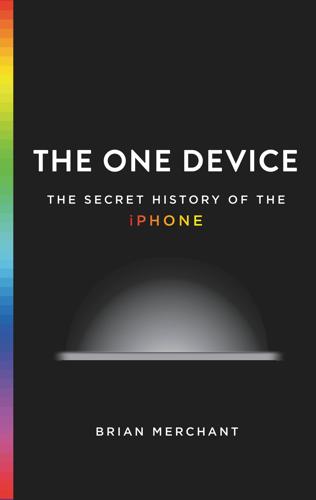
The One Device: The Secret History of the iPhone
by
Brian Merchant
Published 19 Jun 2017
Mike Slade, a former adviser to Steve Jobs, described Ording as a wizard: “He’d take ninety seconds pecking away, he’d hit a button, and there it was—a picture of whatever Steve had asked for. The guy was a god. Steve just laughed about it. ‘Basification in progress,’ he’d announce.” Ording’s father ran a graphic design company outside of Amsterdam, and he learned to code as a kid—maybe it was in his blood. Regardless, industry giants like Tony Fadell hail him as a visionary. One of his peers from the iPhone days puts it this way: “I don’t know what else to say about Bas, that guy’s a genius.” The new touch-based template proved so promising, even exhilarating, that Chaudhri and Ording would pass entire days down there, sometimes without realizing it—UI’s Lennon and McCarthy at work.
…
“Well, Steve,” the exec said, “we have a glass prototype, but it fails the one-meter drop test one hundred out of one hundred times—” Jobs cut him off. “I just want to know if you are going make the fucking thing work.” That exchange may be notable for its snapshot of ultra-Jobs-ness, but it had real ramifications. “We switched from plastic to glass at the very last minute, which was a curveball,” Tony Fadell, the head of the original iPhone’s engineering team, tells me with a laugh. “There were just so many things like that.” The original plan had been to ship the iPhone with a hard plexiglass display, as Apple had done with its iPod. Jobs’s about-face gave the iPhone team less than a year to find a replacement that would pass that drop test.
…
Predictably, the lithium-ion battery is the subject of a constant tug-of-war; as consumers, we demand more and better apps and entertainment, more video rendered in ever-higher res. Of course, we also pine for a longer-lasting battery, and the former obviously drains the latter. And Apple, meanwhile, wants to keep making thinner and thinner phones. “If we made the iPhone a millimeter thicker,” says Tony Fadell, the head of hardware for the first iPhone, “we could make it last twice as long.” About two hours after departing the world’s largest lithium refinery, Jason and I got our batteries stolen. Along with the stuff they powered. We’d just left the comfy clutches of SQM; our driver had dropped us off at the bus station.
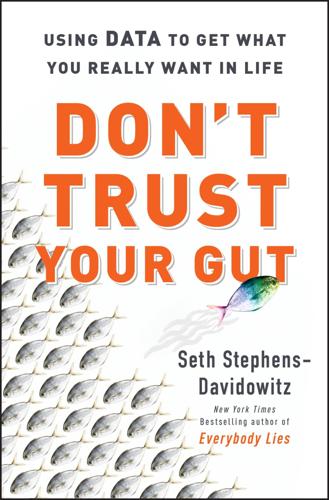
Don't Trust Your Gut: Using Data to Get What You Really Want in LIfe
by
Seth Stephens-Davidowitz
Published 9 May 2022
I thank Eric Zwick for pointing me to it. are at least 10,000 independent creatives: This includes rich owners of S-Corporations and partnerships. Chapter 5: The Long, Boring Slog of Success Tony Fadell: Fadell’s story was told in many places, including here: Seema Jayachandran, “Founders of successful tech companies are mostly middle-aged,” New York Times, September 1, 2019. In an interview on The Tim Ferriss Show, Fadell said: The Tim Ferriss Show #403, “Tony Fadell—On Building the iPod, iPhone, Nest, and a Life of Curiosity,” December 23, 2019. “people over 45 basically die in terms of new ideas”: Corinne Purtill, “The success of whiz kid entrepreneurs is a myth,” Quartz, April 24, 2018.
…
What determines, within a field, who succeeds? Data scientists have mined recently collected datasets on the entire universe of entrepreneurs—and found some surprising predictors of success. Chapter 5 The Long, Boring Slog of Success Every aspiring entrepreneur should hang a poster of Tony Fadell on their wall. One day, a short while ago, Fadell was frustrated by the clunky thermostats available in his house. So, like so many entrepreneurs before him, Fadell harnessed new technology to fix a problem that frustrated him (and millions of others). He created a company (Nest Labs) to develop a new programmable thermostat.
…
Within a short time, the company made Fadell, like so many other tech entrepreneurs, exceedingly rich. A mere four years after starting his company, Fadell sold it to Google for $3.2 billion in cash. There are some important points about Fadell’s story that make it such a valuable one for entrepreneurs—and motivate my “Hang a Tony Fadell Poster on Your Wall” campaign. The data tells us that many aspects of Fadell’s story are common among successful entrepreneurs, even if they might go against some conventional wisdom. First was Fadell’s age. When Fadell started Nest, he was not some whiz kid. He didn’t start Nest from his dorm room.
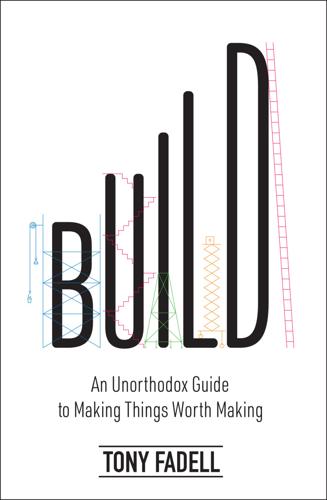
Build: An Unorthodox Guide to Making Things Worth Making
by
Tony Fadell
Published 2 May 2022
See also product management classes in, 51–52 considerations of, 43–44, 47 crisis and, 220–21, 224 cultivating natural successors, 55 decisions and, 61–63 discipline of, 44 establishing effective style of, 52–53 human resource topics at meetings, 240, 241 individual contributors as managers, 238, 248, 251–53 managers becoming directors, 238, 253 meetings of, 253 micromanagement, 44–46, 49, 52, 66, 211, 218, 221, 236, 277 motivation and, 53–54 performance reviews, 51 self-managing, 242 size of organization and, 46, 244 skills required for, 43, 44, 46–49 of teams, 41, 43–44, 46, 49–56, 242, 244, 245, 247, 249–50, 331 training for, 252–53 management consulting, 17–18 manufacturing design team and, 264, 269 disruption of, 115 product development and, 90, 92, 93, 96, 122, 130, 166, 168, 209 product management and, 288 role of, 24, 27, 277 sales team and, 293 marketing CEO expectations and, 324–25 culture of, 258 customer experience and, 270–71, 272, 273 legal team’s checks on, 276, 306 messaging activation matrix, 274, 275, 276, 280, 284, 285 messaging architecture, 102, 271, 272, 273, 280 of Nest Labs, 264–65 product development and, 279 product management and, 270, 273, 279, 281, 286, 287, 288–89, 290, 291 prototypes of, 100, 105–6 rigorous and analytical process of, 270–71 role of, 24, 27, 182 sales and, 295 startups and, 227 storytelling and, 270, 271, 273–74, 278–79, 278, 285, 286, 290 teams and, 270–80 Memegen app, 255 mentors/coaches board of directors and, 340, 341 breakpoints and, 256–57, 260 of early adulthood, 9 individual contributors as, 47 relationships and, 373–76 for startups, 180, 183, 184, 185–86, 194, 218, 223 teams and, 230, 240, 256–57 value of, xi, xii, xiii, 374–76 Microsoft, 3, 91, 123–24, 282, 310, 321 Microsoft OS, 31, 37, 77, 88, 202 Moore, Geoffrey, Crossing the Chasm, 151, 152–54, 156 Mossberg, Walt, 134 motivation of assholes, 68, 70, 75 management and, 53–54 Motorola, 148 Motorola Mobility, 352 Motorola ROKR iTunes phone, 329 MP3 players, 40–41, 87, 120, 122, 134, 332 Musicmatch Jukebox, 134 music streaming, 122 Musk, Elon, 21, 321 Nadella, Satya, 123–24, 321 Nest Cam, 306–8, 307, 313 Nest Labs board of directors of, 338, 339–40 culture of, 257, 325, 346, 349, 351, 352, 363, 375 customer support and, 323 development of, xviii–xix, 55, 165, 177, 185, 199–200, 226, 230 Google’s acquisition of, xix, 304, 310–16, 338, 345–52, 354–55, 359–61, 371 Google’s reabsorption of, 319–20 Google’s selling of, 317–19, 367 growth of, 225, 230, 236 intellectual property and, 306 investors in, 164, 165–66, 177, 178 marketing of, 264–65 perks at, 359–62 research for, 230 sales culture of, 297 Three Crowns hiring method at, 233 Nest Learning Thermostat app for phone, 98–99, 164, 167 customer installation, 99, 103–6, 113, 178, 280 defining feature of, 120 development of, xiv, xix, 98–100, 164, 166–68, 174–77, 279 disruption of, 124 generations of, 105–6, 159, 160–61, 167–68, 179, 230 interactive components of, 309–10 launching of, 117, 167 lawsuit against, 117, 303–4 marketing of, 274, 275, 276, 277–79, 278 packaging prototype for, 100, 101, 102, 264–65, 274 problems solved by, 166, 279 product manager for, 230, 289 Rush Hour Rewards, 113–14 screwdriver for, 104–6, 104 storytelling for, 112, 113–14, 234, 264–65, 274, 276, 278–79, 278 success of, 310–11 user testing of, 103–4 Why We Made It page, 278–79, 278 Nest Protect development of, xiv, xix, 161, 168, 309 generations of, 313 launching of, 169 Wave to Hush, 219–20, 222–23 Nest Secure, 289–90, 313 Newton, 139 Ng, Stan, 92 Niel, Xavier, 199–200 Nokia, 117, 122–23, 327 Not Invented Here Syndrome, 327 Novotney, DJ, 92 Oenning, Anton, 264–65 Oh-hyun, Kwon, 54 Omidyar, Pierre, 188 operations team competition and, 123 product management and, 291 role of, 24 sales and, 293, 295, 298 startups and, 182 Page, Larry acquisition of Nest and, 314–15, 320, 347–48, 351–52, 354, 355, 361 Alphabet and, 314 selling of Nest, 317–18 Palmer, Andy, 322 Palm PDAs, 15, 130, 332 patents, 305, 306 perks, criteria for, 356–63 personal growth adulthood, 5–13 criteria for getting a job, 14–19 heroes and, 20–25, 27 individual contributor’s perspective, 26–27, 28, 29, 30, 31–33 Philips competition with iPod, 121 culture of, 36–37, 209, 258 Tony Fadell as CTO at, xvii, 18, 36–37, 45–46, 58, 61, 77, 81, 88, 89, 96, 125, 129–30, 209, 374 as partner and investor in General Magic, 36, 37 target customer of, 58–61, 130 team schedules for, 144–45 Philips Nino, launching of, xvii, 38, 39–40, 39, 90 Philips Strategy and Ventures Group, Tony Fadell’s launching of, xvii, 40 Philips Velo customer panels for, 58–60 launching of, xvii, 37–40, 38, 90 project schedule for, 145 Pichai, Sundar, 53, 347–48, 355 Pinterest, 160 Pocket Crystal, 1, 2, 12 Porat, Marc, 1–2, 1, 27, 37 Power Mac G4 Cube, 329 PR crisis and, 219 customer experience and, 105 product management and, 137, 285, 288, 291 role of, 16, 27, 48 venture capital and, 195 product management legal team and, 287, 288, 306 marketing team and, 270, 273, 279, 281, 286, 287, 288–89, 290, 291 PR and, 137, 285, 288, 291 product manager and, 230, 270, 273, 281–91 project manager and, 281–82 role of, 24, 48, 227, 230, 279, 281, 283, 284, 286, 289 as set of skills, 284 startups and, 227 as voice of customer, 281, 282, 284, 286, 289–90 product managers (PdMs), 230, 270, 273, 281–91 product/market fit, 150, 151, 155, 156 products as brand, 270 building of, xii–xiii, 87–93, 373–76 CEO expectations of, 325 characteristics of, 14 competition for market share and mind share, 111 cost of goods sold (COGS), 106, 155 evolution versus disruption versus execution, 115–25 external project heartbeat rhythms of, 145–46, 149 internal project heartbeat rhythms of, 138–49, 139 making the intangible tangible, 95–106, 113, 323 messaging architecture of, 102 packaging prototypes, 100, 101, 102, 264–65 press releases for, 136–37 problems solved by, 14, 15–17, 19, 36, 61, 96, 109, 110, 262, 263, 273, 279, 290 product specific groups, 250–51 profitability of, 150–51, 152–54, 155, 156, 158, 160–61 prototypes of customer experience, 95, 96, 97, 98–100, 102–6, 119 stages of profitability, 150–61 storytelling and, 107–14, 266, 270, 271, 273, 278, 286, 288 user testing of, 103–5 version 1 products, 60, 115, 126–27, 133–34, 136, 138, 140, 146–47, 149, 150, 151, 152–54, 155, 157–58, 159, 179 version 2 products, 115–16, 126, 127–28, 134, 135–36, 149, 150, 151, 152–54, 155, 156, 157, 159, 179 version 3 products, 150–51, 152–54, 155–57, 159 program managers (PgMs), 282 project managers (PjMs), 281–82 Quality Computers, xv quitting career growth and, 41, 76–78 human resources and, 76, 81, 85, 86 narrative of, 83–84, 235 as negotiating tactic, 82–83 networking and, 78–80, 81, 84 personal problems and, 82 storytelling and, 83–84, 235 as strategy for dealing with assholes, 71, 73, 84–85 transition of, 76–81, 235 RealNetworks, Tony Fadell’s digital music player with, xvii, 41, 77, 80, 87, 332 reinvention, in Silicon Valley, xii risks of early adulthood, 6, 8, 9–13 political assholes and, 65–66 Robbin, Jeff, 303 Rogers, Matt at Apple, 237 brown-bag lunches with the CEO, 237 hiring process and, 233 on iPod engineering team, 55, 165 Nest Labs acquired by Google, 316 Nest Labs development, xviii–xix, 55, 165, 177, 226, 230 Ross, Ivy, 64 Rubin, Andy, 327–28 sales culture of, 292–99 product management and, 287, 288 relationships and, 294, 295–99 role of, 27, 182, 284, 285, 292, 295 startups and, 227 vested commission model of, 292–93, 298–99 Samsung, 89–90, 189, 345 Sander, Brian, 24 Sander, Wendell, 24 seed crystals, 180, 185, 232, 339–40 Silicon Valley culture of, xi–xii, 4, 10–11, 16, 37, 359 early adopters of, 157 “fail fast” mentality in, 174 investment in, 90, 192 smartphones customer experience of, 109, 128, 130 products based on use of, 16–17 Smith, Cheryl, 85 social media, 73.
…
It is an amazing blueprint on how creative thinkers can negotiate their way to making ideas come to life in the world.” —Sir David Adjaye, OBE, architect “Tony Fadell is the rare combination of engineer and entrepreneur, with the soul of a storyteller. Build takes you far away from the beige box and into the glistening white world of the man who gave us the iPod, iPhone, and Nest, while providing actionable advice for formulating, launching, scaling, and even selling a business.” —Benjamin Clymer, founder, HODINKEE Copyright BUILD. Copyright © 2022 by Tony Fadell. All rights reserved under International and Pan-American Copyright Conventions. By payment of the required fees, you have been granted the nonexclusive, nontransferable right to access and read the text of this e-book on-screen.
…
So my leadership style is loud and passionate, mission-focused above all else. I pick a goal then run full speed ahead, refusing to let anything stop me, and expect everyone to run with me. But I also realize that what motivates me may not be what motivates my team. The world is not made up entirely of Tony Fadells (and let us all be grateful for that). There are also normal, sane people with lives and families and lots of things they can and need to do, all pulling at their time. So as a manager, you have to find what connects with your team. How can you share your passion with them, motivate them? The answer, as usual, comes down to communication.
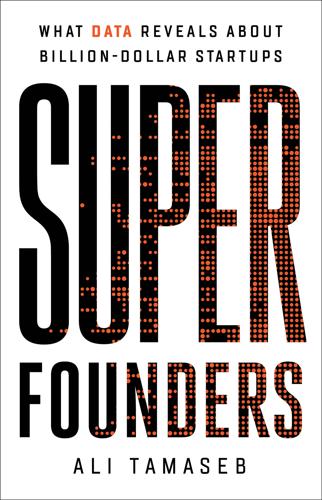
Super Founders: What Data Reveals About Billion-Dollar Startups
by
Ali Tamaseb
Published 14 Sep 2021
A FOUNDER WHO ALWAYS BUILT HIGHLY DIFFERENTIATED PRODUCTS INTERVIEW WITH TONY FADELL OF NEST AND APPLE Nest’s first product, its thermostat, is one example of a highly differentiated product. When the company began to reinvent the home thermostat, the product category had barely been touched in decades. Thermostats date back as far as the seventeenth century, and the “modern” thermostat—a digital, programmable device designed in the 1980s—was a clunky, rectangular wall panel that required people to punch in their desired temperature each day.3 Tony Fadell, former SVP of the Apple iPod division, is known as the “father of the iPod” and coinventor of the iPhone.
…
Classification: LCC HD62.5 .T3554 2021 | DDC 658.1/1—dc23 LC record available at https://lccn.loc.gov/2020044864 ISBNs: 978-1-5417-6842-0 (hardcover), 978-1-5417-6841-3 (ebook) E3-20210420-JV-NF-ORI CONTENTS Cover Title Page Copyright Introduction Correlation Is Not Causation: A Note on Methods and Statistics PART ONE: THE FOUNDERS 1 Myths Around Founders’ Backgrounds Founding a Billion-Dollar Startup at Age Twenty-One: INTERVIEW WITH HENRIQUE DUBUGRAS OF BREX 2 Myths Around Founders’ Education A Professor Who Built Multiple Billion-Dollar Startups: INTERVIEW WITH ARIE BELLDEGRUN OF KITE PHARMA AND ALLOGENE 3 Myths Around Founders’ Work Experience Founders Who Built a $2 Billion Cancer Company Without Any Medical Background: INTERVIEW WITH NAT TURNER OF FLATIRON HEALTH 4 The Super Founder A Founder Who Met Success on the Second Try: INTERVIEW WITH MAX MULLEN OF INSTACART PART TWO: THE COMPANY 5 The Origin Story A Billion-Dollar Startup That Originated at a Large Tech Company: INTERVIEW WITH NEHA NARKHEDE OF CONFLUENT 6 Pivots 7 What and Where? A Billion-Dollar Move Out of Silicon Valley into Denver: INTERVIEW WITH RACHEL CARLSON OF GUILD EDUCATION 8 Product A Founder Who Always Built Highly Differentiated Products: INTERVIEW WITH TONY FADELL OF NEST AND APPLE 9 Market A Founder Who Did Both Market Creation and Expansion: INTERVIEW WITH MAX LEVCHIN OF PAYPAL AND AFFIRM 10 Market Timing A Billion-Dollar Startup with Perfect Market Timing: INTERVIEW WITH MARIO SCHLOSSER OF OSCAR HEALTH 11 Competition Competing Against Strong Incumbents: INTERVIEW WITH ERIC YUAN OF ZOOM 12 The Defensibility Factor PART THREE: THE FUNDRAISING 13 Venture Capital Versus Bootstrapping A $7.5 Billion Company That Was Bootstrapped for the First Five Years: INTERVIEW WITH TOM PRESTON-WERNER OF GITHUB 14 Bull Market Versus Bear Market A Billion-Dollar Company That Started in the Depth of the Recession: INTERVIEW WITH MICHELLE ZATLYN OF CLOUDFLARE 15 Capital Efficiency 16 Angels and Accelerators A Prolific Angel Investor Turned VC: INTERVIEW WITH KEITH RABOIS OF FOUNDERS FUND 17 VC Investors An Investor in Airbnb, DoorDash, Houzz, Zipline, and More: INTERVIEW WITH ALFRED LIN OF SEQUOIA CAPITAL 18 Fundraising An Investor in Facebook, SpaceX, Stripe, and More: INTERVIEW WITH PETER THIEL What to Remember Acknowledgments Discover More About the Author Praise for Super Founders Notes Explore book giveaways, sneak peeks, deals, and more.
…
In some cases they are a representative sample of the data, and in other cases they are outliers. The outliers are important too—they demonstrate that sometimes you can succeed even in the face of data that shows otherwise. We will hear from Max Levchin, co-founder of PayPal and Affirm, on market creation versus expansion; from Tony Fadell, founder of Nest and the inventor of the iPod, on product differentiation; from Michelle Zatlyn, co-founder of Cloudflare, on starting a company during the recession; and from Eric Yuan, founder of Zoom, on competition. We will talk with Peter Thiel, an investor in companies like Facebook, SpaceX, and Spotify, Alfred Lin of Sequoia Capital, an investor in companies like Airbnb and DoorDash, and Keith Rabois of Founders Fund, an investor in companies like YouTube and LinkedIn, about what they look for when listening to a pitch and how startups should best prepare for fundraising.
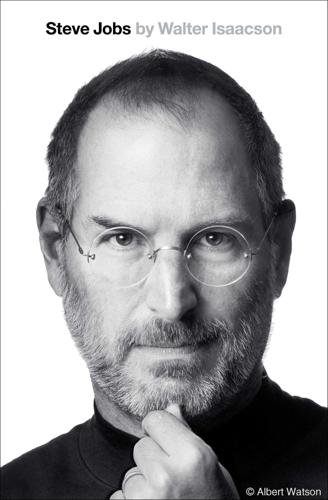
Steve Jobs
by
Walter Isaacson
Published 23 Oct 2011
A Lion at Fifty: Interviews with Mike Slade, Alice Waters, Steve Jobs, Tim Cook, Avie Tevanian, Jony Ive, Jon Rubinstein, Tony Fadell, George Riley, Bono, Walt Mossberg, Steven Levy, Kara Swisher. Walt Mossberg and Kara Swisher interviews with Steve Jobs and Bill Gates, All Things Digital conference, May 30, 2007; Steven Levy, “Finally, Vista Makes Its Debut,” Newsweek, Feb. 1, 2007. CHAPTER 36: THE iPHONE An iPod That Makes Calls: Interviews with Art Levinson, Steve Jobs, Tony Fadell, George Riley, Tim Cook. Frank Rose, “Battle for the Soul of the MP3 Phone,” Wired, Nov. 2005. Multi-touch: Interviews with Jony Ive, Steve Jobs, Tony Fadell, Tim Cook. Gorilla Glass: Interviews with Wendell Weeks, John Seeley Brown, Steve Jobs.
…
Steve Jobs, Macworld keynote address, Jan. 9, 2001; Joshua Quittner, “Apple’s New Core,” Time, Jan. 14, 2002; Mike Evangelist, “Steve Jobs, the Genuine Article,” Writer’s Block Live, Oct. 7, 2005; Farhad Manjoo, “Invincible Apple,” Fast Company, July 1, 2010; email from Phil Schiller. iTunes: Interviews with Steve Jobs, Phil Schiller, Jon Rubinstein, Tony Fadell. Brent Schlender, “How Big Can Apple Get,” Fortune, Feb. 21, 2005; Bill Kincaid, “The True Story of SoundJam,” http://panic.com/extras/audionstory/popup-sjstory.html; Levy, The Perfect Thing, 49–60; Knopper, 167; Lev Grossman, “How Apple Does It,” Time, Oct. 17, 2005; Markoff, xix. The iPod: Interviews with Steve Jobs, Phil Schiller, Jon Rubinstein, Tony Fadell. Steve Jobs, iPod announcement, Oct. 23, 2001; Toshiba press releases, PR Newswire, May 10, 2000, and June 4, 2001; Tekla Perry, “From Podfather to Palm’s Pilot,” IEEE Spectrum, Sept. 2008; Leander Kahney, “Inside Look at Birth of the iPod,” Wired, July 21, 2004; Tom Hormby and Dan Knight, “History of the iPod,” Low End Mac, Oct. 14, 2005.
…
Microsoft: Interviews with Steve Jobs, Phil Schiller, Tim Cook, Jon Rubinstein, Tony Fadell, Eddy Cue. Emails from Jim Allchin, David Cole, Bill Gates, Apr. 30, 2003 (these emails later became part of an Iowa court case and Steve Jobs sent me copies); Steve Jobs, presentation, Oct. 16, 2003; Walt Mossberg interview with Steve Jobs, All Things Digital conference, May 30, 2007; Bill Gates, “We’re Early on the Video Thing,” Business Week, Sept. 2, 2004. Mr. Tambourine Man: Interviews with Andy Lack, Tim Cook, Steve Jobs, Tony Fadell, Jon Rubinstein. Ken Belson, “Infighting Left Sony behind Apple in Digital Music,” New York Times, Apr. 19, 2004; Frank Rose, “Battle for the Soul of the MP3 Phone,” Wired, Nov. 2005; Saul Hansel, “Gates vs.

Becoming Steve Jobs: The Evolution of a Reckless Upstart Into a Visionary Leader
by
Brent Schlender
and
Rick Tetzeli
Published 24 Mar 2015
And its “random access” capabilities distanced it even more from the likes of a Discman, since it gave you the potential to find a particular song out of that enormous trove almost instantly. In January 2001, Ruby asked some former Newton engineers to begin work in earnest on some sort of portable audio device around the Toshiba micro-drive. In March he put an engineer he’d hired from Philips NV, Tony Fadell, in charge of the group. Fadell, an energetic entrepreneur with the build of a college wrestler and the intensity of a high school football coach, had worked at General Magic back in the early 1990s, with Bill Atkinson, Andy Hertzfeld, and Susan Kare, veterans of the original Macintosh team, who had told him horror stories about Steve in his early days.
…
Motorola promised Apple that it would create a new line of phones, called the ROKR, expressly as a vehicle for iTunes. The ROKR project was controversial from the start, for one simple reason: most people at Apple didn’t like the idea of collaborating with other companies. The iPod hardware team, especially, led by Tony Fadell, couldn’t stomach the notion of ceding the development of what they had started to call “musicphones” to the traditional handset industry. And the more Motorola showed them of its plans for the ROKR, the more certain they became that licensing their precious iPod and iTunes software had been a mistake.
…
He conferred with Steve Sakoman, another former Newton and Palm engineer who now worked for Avie Tevanian as the VP of software technology, and who had been pushing for Apple to make the move into phones. And he wanted to hear what the iPod guys thought about multi-touch, since they’d already built the two musicphone prototypes. He asked Tony Fadell to come check out the Jumbotron, since he had the hardware engineering expertise to judge what it might take to build such a technology into a much smaller device that could be mass-produced. Once he saw it, Fadell agreed that the technology was really interesting, but allowed that it wouldn’t be easy to shrink that demo the size of a Ping-Pong table down to something functional that could fit into a pocket-sized device.
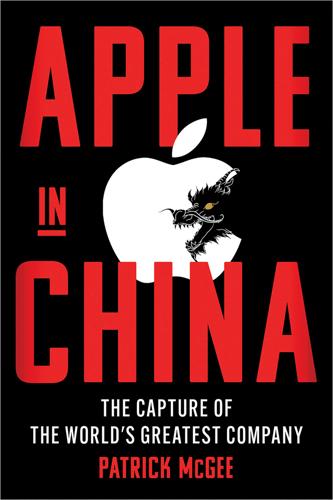
Apple in China: The Capture of the World's Greatest Company
by
Patrick McGee
Published 13 May 2025
Chapter 17: Project Purple in Asia 82 percent in 2004: Peter Cohen, “iPod US Marketshare Rises to 82 Percent,” MacWorld, October 10, 2004, https://www.macworld.com/article/172751/ipodshare.html. “the new iPod Invisa”: Fred Armisen, “Weekend Update: Tina Fey,” Saturday Night Live, YouTube, uploaded October 25, 2013 (aired November 19, 2005), https://www.youtube.com/watch?v=plx69SIvgWI. “heavy, stomping footsteps”: Lex Fridman, “Tony Fadell: iPhone, iPod, and Nest,” episode 294, June 15, 2022, https://lexfridman.com/tony-fadell. had fled Chile: Microsoft, “Rubén Caballero: Another Adventure and Loving It!” (corporate blog), March 24, 2021, https://blogs.microsoft.com/bayarea/2021/03/24/ruben-caballero-another-adventure-and-loving-it/. more of an enhanced iPod: Markoff, as quoted in Fred Vogelstein, “Inside Apple’s 6-Month Race to Make the First iPhone a Reality,” Wired, June 28, 2017 (originally published in 2013), https://www.wired.com/story/iphone-history-dogfight/.
…
Ruby has said “the form factor was self-evident,” describing how the electronics needed were the size of a pack of cards. Apple was still a small ship, and employees were tied up on other projects. So Ruby looked outside for someone to lead the project and determine if it was really feasible. That led him to Tony Fadell, a brash, quick-minded entrepreneur from Detroit with an engineering mind and a knack for punchy storytelling. He’d founded three companies by the time he graduated from the University of Michigan, and then developed an expertise working on mobile devices for General Magic, a pioneering Apple spinout that never made it commercially but garnered respect in Silicon Valley.
…
Both men had worked at Psion, a UK-based computing company that in the late 1990s made subnotebook PDAs, messaging devices with a full keyboard and packaged in a clever clamshell. Tupman was enamored with Apple designs and mentioned he’d love to work there. Well, good news: Apple was hiring engineers. Tupman sent over his CV, detailing his niche experience in Asia working with silicon and hardware to make handheld electronics. Within days he received a phone call from Tony Fadell. Tupman, who gives off a sense of warmth in his soft-spoken English-accented speech, was living in London at the time. He agreed to fly over the Pacific for an interview in mid-September. A day before his flight, Al-Qaeda hijacked passenger jets and flew them into the World Trade Center. In the chaos that followed, international flights were delayed for a week.
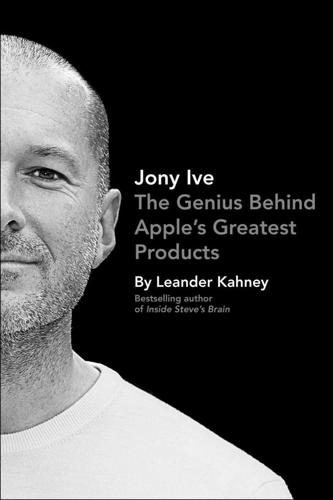
Jony Ive: The Genius Behind Apple's Greatest Products
by
Leander Kahney
Published 14 Nov 2013
Ruby had six months to come up with Apple’s first MP3 player. “In Your Pocket” As Rubinstein remembers, his biggest initial problem was that everybody at Apple, including Jony’s ID group, was already busy with other products. As was usual with such exploratory, blue-sky projects, Apple went looking for an outside consultant. Someone recommended Tony Fadell, a designer/engineer who specialized in handheld hardware and digital audio. Fadell had worked for General Magic, an Apple spinoff, and developed PDAs for Philips before launching his own start-up, Fuse Networks, in the late 1990s. Fadell’s twelve-person firm was busy trying to build an MP3 stereo player, a conventional rack-mounted component with a hard drive and CD reader instead of a tape deck or FM radio.
…
Jobs asked Fadell if he could build Schiller’s scroll wheel. Fadell said yes, of course. The project was code-named P-68. Project Dulcimer For reasons that no one seems to remember, P-68 came to be known among insiders as “Project Dulcimer.” Jobs had green-lighted it, but one main player on the project, Tony Fadell, not only didn’t work at Apple, he didn’t particularly want to. Fadell pitched Rubinstein on awarding the job to his start-up on a contract basis, but Rubinstein refused. Instead, he extended the reluctant Fadell’s contract. As the project moved forward, however, Rubinstein got more and more uncomfortable with the arrangement: He wanted Fadell on board full time at Apple.
…
Jony reportedly went to Jobs and told him, “It’s him or me.” Despite Rubinstein’s essential role in the development of the iPod and scores of other products, Jobs chose Jony.27 In October 2005, Apple issued a press release that framed Rubinstein’s exit as a long-deserved retirement. He was replaced as head of the iPod division by Tony Fadell.28 Rubinstein would spend some time building a house in Mexico before later becoming CEO of Palm and developing a rival to the iPhone. Speaking of the affair years later, Rubinstein was diplomatic about his relationship with Jony. “Jony and I worked very closely over many years and did a lot of work together.

The Virgin Way: Everything I Know About Leadership
by
Richard Branson
Published 8 Sep 2014
That’s the classic sign of a chronic entrepreneur and good leader – they are always itching to move on to ‘the next big thing’. I don’t know about Tony Fadell or anyone else around the table that evening, but I’ve often been told I exhibit all the classic symptoms of suffering from ADD (Attention Deficit Disorder). There may be distinct similarities to ADD but I have always believed I am more likely to be suffering from a bad case of SERS – Serial Entrepreneurial Restlessness Syndrome. As the Apple story so capably demonstrates, a company’s culture is really the power behind the brand and feeds into everything it does. At Nest, using lessons learned from his time in Cupertino, Tony Fadell told us he has worked at deliberately developing a more collegial and less dictatorial culture than that which Jobs fostered at Apple.
…
By coincidence, right around the time that Virgin Produced, our entertainment division, was about to release the movie Jobs, which tells the story of Steve Jobs and the early years of Apple, I had dinner with a fascinating group of business leaders that included Twitter CEO Dick Costolo, Nest’s Tony Fadell, Mike McCue of Flipboard and Dave Morin of the social network Path. As someone who is a regular user of Flipboard and, for reasons I cannot begin to explain, has millions of followers on Twitter, this was a mindboggling group and they didn’t disappoint – they all had great stories to share.
…
As I write this I just heard a news item that the latest iteration of the iPhone has sold nine million units in its first three days on the market: a quite amazing statistic by any measure. Selling nine million of something in a decade would be an achievement for most companies, but in three days! AN APPLE A DAY Tony Fadell, I learned, was one of the key players in the development of Apple’s revolutionary iPod. He told us how, early in his Apple career, he’d approached Jobs with the initial concept, then gone on to work on building and developing no fewer than eighteen generations of iPods and three generations of iPhones – gizmos that almost single-handedly turned the music and telecommunications industries on their heads.
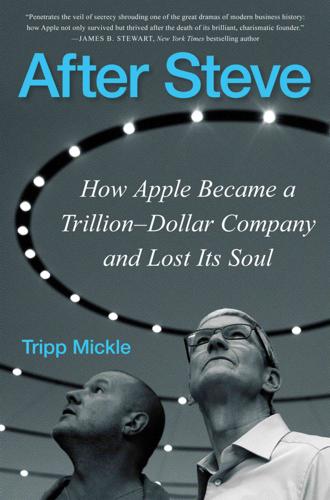
After Steve: How Apple Became a Trillion-Dollar Company and Lost Its Soul
by
Tripp Mickle
Published 2 May 2022
—George Bernard Shaw Contents Cover Title Page Dedication Epigraph Cast of Characters Prologue Chapter 1: One More Thing Chapter 2: The Artist Chapter 3: The Operator Chapter 4: Keep Him Chapter 5: Intense Determination Chapter 6: Fragile Ideas Chapter 7: Possibilities Chapter 8: Can’t Innovate Chapter 9: The Crown Chapter 10: Deals Chapter 11: Blowout Chapter 12: Pride Chapter 13: Out of Fashion Chapter 14: Fuse Chapter 15: Accountants Chapter 16: Security Chapter 17: Hawaii Days Chapter 18: Smoke Chapter 19: The Jony 50 Chapter 20: Power Moves Chapter 21: Not Working Chapter 22: A Billion Pockets Chapter 23: Yesterday Epilogue Author’s Note Acknowledgments A Note on Sources Bibliography Notes Index Photo Section About the Author Copyright About the Publisher Cast of Characters Tim Cook: Chief Executive Officer (2011–present), Senior Vice President for Worldwide Operations, COO (1998–2011) Jony Ive: Chief Design Officer (2015–2019), Senior Vice President of Design, member of design team (1992–2015) EXECUTIVES Angela Ahrendts: Senior Vice President, Retail (2014–2019) Katie Cotton: Vice President of Worldwide Communications (1996–2014) Eddy Cue: Senior Vice President, Services (2011–present, joined Apple in 1989) Steve Dowling: Vice President, Communications (2015–2019, joined Apple in 2003) Tony Fadell: Senior Vice President, iPod Division (2005–2008, joined Apple in 2001) Scott Forstall: Senior Vice President, iOS (2007–2012, joined Apple in 1997) Greg Joswiak: Senior Vice President, Worldwide Marketing (2020–present, joined Apple in 1986) Luca Maestri: Senior Vice President and Chief Financial Officer (2014–present, joined Apple in 2013) Bob Mansfield: Senior Vice President, Hardware Engineering (2005–2012, joined Apple in 1999, remained as an adviser on future projects after 2012) Deirdre O’Brien: Senior Vice President, Retail + People (2019–present, joined Apple in 1988) Peter Oppenheimer: Senior Vice President and Chief Financial Officer (2004–2014, joined Apple in 1996) Dan Riccio: Senior Vice President, Hardware Engineering (2012–2021, joined Apple in 1998) Jon Rubinstein: Senior Vice President, Hardware Engineering and iPod Division (1997–2006) Phil Schiller: Senior Vice President, Worldwide Marketing (1997–2020, joined Apple in 1987 and 1997) Bruce Sewell: Senior Vice President and General Counsel (2009–2017) Jeff Williams: Chief Operating Officer (2015–present, joined Apple in 1998) INDUSTRIAL DESIGN Bart Andre: Designer (1992–present) Robert Brunner: Director of Industrial Design (1990–1996) Danny Coster: Designer (1994–2016) Daniele De Iuliis: Designer (1992–2018) Julian Hönig: Designer (2010–2019) Richard Howarth: Designer (1996–present) Duncan Kerr: Designer (1999–present) Marc Newson: Designer (2014–2019), LoveFrom (2019–present) Tim Parsey: Manager, Industrial Design Studio (1991–1996) Doug Satzger: Designer (1996–2008) Christopher Stringer: Designer (1995–2017) Eugene Whang: Designer (1999–2021) Rico Zorkendorfer: Designer (2003–2019) SOFTWARE TEAM Imran Chaudhri: Designer (1995–2016) Greg Christie: Vice President, Human Interface Design (1996–2015) Alan Dye: Vice President, Human Interface Design (2012–present); Creative Director (2006–2012) Henri Lamiraux: Vice President, Software Engineering (2009–2013, joined Apple in 1990) Richard Williamson: Designer (2001–2012) MARKETERS Hiroki Asai: Vice President, Global Marketing Communications (2010–2016, joined Apple in 2000) Paul Deneve: Sales & Marketing Manager, Apple Europe (1990–1997); Vice President, Special Projects (2013–2017) Duncan Milner: Chief Creative Officer, TBWA\Media Arts Lab (2000–2016) James Vincent: CEO, TBWA\Media Arts Lab; Managing Director, TBWA\Chiat\Day, Apple (2000–2006) MUSIC MEN Dr.
…
The nascent MP3 market sparked dreams of a next-generation Sony Walkman. The project took flight after Jon Rubinstein, the head of hardware engineering, discovered that Toshiba’s semiconductor unit had created a miniature disk drive that would hold a thousand songs. He pushed to buy the rights to every disk Toshiba made. To run the project, Jobs hired Tony Fadell, a hardware engineer who had worked on General Magic’s personal digital assistant. Rubinstein and Fadell assembled the components, while Apple’s head of marketing, Phil Schiller, contributed the idea of creating a wheel to scroll through songs, a concept inspired by a Bang & Olufsen phone. They handed the ingredients to Ive to package.
…
It also showed that Cook’s decade at Apple had imbued him with a deep understanding of the company’s unique culture. It cemented his position as Jobs’s most likely successor. There wasn’t a true challenger. Three of Apple’s most talented engineers, software developer Avie Tevanian and hardware executives Jon Rubinstein and Tony Fadell, had already left the company. Rising software star Scott Forstall was considered too young, hardware leader Bob Mansfield was regarded as too narrowly focused, and product marketer Phil Schiller was thought of as too divisive. Jony Ive was better at managing a small team than worrying about Apple’s sprawling business.
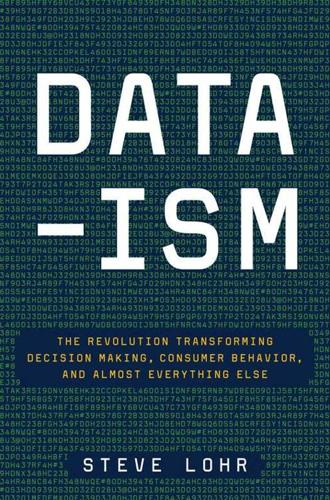
Data-Ism: The Revolution Transforming Decision Making, Consumer Behavior, and Almost Everything Else
by
Steve Lohr
Published 10 Mar 2015
For other parts of the book, there were people I spent whole days with, such as Timothy Buchman at the Emory medical center in Atlanta and Nick Dokoozlian in the grape vineyards of central California and Michael Haydock in suburban Minneapolis. Many others were interviewed for this book. They include Sam Adams, Brooke Barrett, Richard Berner, Patrick Bosworth, Thomas Botts, Erik Brynjolfsson, John Calkins, Murray Campbell, Dennis Charney, Herbert Chase, Jeffrey Chester, Sharath Cholleti, Adam D’Angelo, Arne Duncan, Sue Duncan, Tony Fadell, Edward Felten, David Ferrucci, Rachana Shah Fischer, Brian Gehlich, Jim Goodnight, Nagui Halim, Hendrik Hamann, Glenn Hammerbacher, Lenore Hammerbacher, Danny Hillis, Jeffrey Immelt, Jon Iwata, James Kalina, Kaan Katircioglu, Gary King, Jon Kleinberg, Martin Kohn, Randy Komisar, Patricia Kovatch, Edward Lazowska, and Michael Linderman.
…
Her stature in the field grew out of a stellar academic career, beginning as a graduate student at MIT, and later as a researcher at Carnegie Mellon, Harvard, and elsewhere. In 2007, she was awarded a MacArthur “genius” fellowship. Yet in 2010, Matsuoka joined a start-up company. Its product? Thermostats. A dumbfounding move at first glance, but Nest Labs was not just any start-up, nor did it plan to make humble household wall fixtures. Nest was cofounded by Tony Fadell, a former Apple executive who designed the iPod, and then headed the iPod and iPhone division until he left in 2009. The other cofounder was Matt Rogers, a younger Apple alumnus. They recruited an impressive team of Silicon Valley talent in hardware, software, design, and data analysis. They won the backing of blue-chip venture capital firms including Kleiner Perkins Caufield & Byers and the investment arm of Google, as well as Generation Investment Management, cofounded by Al Gore and dedicated to environmentally responsible investments.
…
That involved writing software to handle the data signals from sensors on the prosthetic hand and writing machine-learning software to train it. At Nest, he calls himself an algorithms engineer, and he is adept with the software toolkit of data science. His job is to write the software that makes sense of the sensor and other data to school its learning thermostats. He describes it as “thermal modeling in the home.” Tony Fadell, the chief executive of Nest, is at heart a hardware designer who loves elegant objects of utility. The Nest thermostat is such an object, as is the smart smoke alarm and carbon monoxide detector that the company introduced in late 2013. It communicates in spoken words, offering information and suggestions, instead of emitting earsplitting beeps.

Dogfight: How Apple and Google Went to War and Started a Revolution
by
Fred Vogelstein
Published 12 Nov 2013
But by the end of 2003, as the iPod became Apple’s most important product since the Macintosh, it was also starting to look misguided. Cell phone makers were putting music-listening applications in their phones. And companies such as Amazon, Walmart, and Yahoo! were beginning to sell downloadable music. Executives such as iPod boss Tony Fadell worried that if consumers suddenly gave up their iPods for music phones, Apple’s business—only five years removed from its flirt with bankruptcy—would be crushed. “We didn’t really have a hit on our hands [with the iPod] until late 2003, early 2004, so we were saying maybe we don’t have the market domination—the retail channels—to expand the iPod’s business properly,” Fadell said.
…
He’d spent the night before the Tuesday keynote at a San Francisco hotel up the street from Moscone, but he’d forgotten to check out, and he’d left all his luggage in his room. * * * Getting the iPhone ready for sale wasn’t the only distraction Apple engineers had to contend with in early 2007. To get the iPhone built, Jobs had pitted two of his star executives against each other—Scott Forstall and Tony Fadell—to see who could come up with the best product. The fallout from that two-year fight was now rippling through the corporation. It had been an ugly war, full of accusations of sabotage and backstabbing, pitting friends against friends. It had left many people on both sides feeling that Apple no longer resembled the company they had joined.
…
But it also seemed as if Jobs had some internal flames to fan of his own, said one of the engineers who was there along with Grignon and many others who had worked on the project, including Fadell and Forstall. “So there’s this reunion of the original Mac guys, and it’s really cool. And then Steve goes up to Tony [Fadell] and proceeds to go over in a corner of the store and talk to him for an hour and ignore Forstall just to fuck with him.” “Up until that day, for the previous six months, everything had been Tony’s fault. Any hardware problems or ship delays or manufacturing problems—all Tony’s fault. Scott could do no wrong.
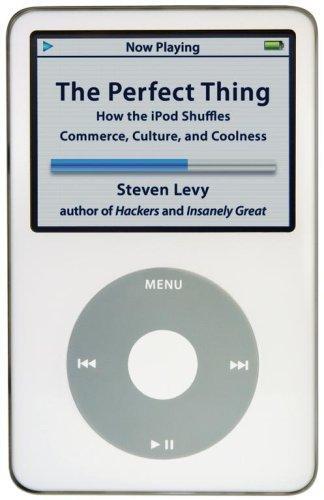
The Perfect Thing: How the iPod Shuffles Commerce, Culture, and Coolness
by
Steven Levy
Published 23 Oct 2006
Naturally, when you look at someone's music, you make judgments. An eclectic and knowing collection raises your opinion of the collector. By some accounts, a really good playlist can even generate an aphrodisiac effect. In a blog posting, the tech writer Mitch Ratcliffe reported on a lunch with Apple's Tony Fadell, who told Ratcliffe about grateful e-mails he'd received from collegians on campus networks. Apparently these male students were beneficiaries of midnight visits from female students who'd scanned the guys' playlists on the campus networks and were so impressed that they craved an instant hookup.
…
The 32-year-old engineer was taking a rare few days off. He had recently started a small company and was more than happy to continue with it. He liked the control of heading his own firm; too many times while working for someone else, the fiercely independent Detroit native wound up feeling cheated. This call was from Apple. All his life, Tony Fadell had idolized that company. When he was twelve, he'd combined a summer's money he'd made caddying with a contribution from his grandfather to buy an Apple lie personal computer. He became an ace pro- The Perfect Thing 54 grammer and started three companies before he graduated from the University of Michigan.
…
It was logical to expect a task like that to take at least a year. By their working very hard, it could be done sometime in 2002. But that ignored a more important deadline. This was a classic consumer product, nailed down to unyielding seasonal economics. And the lion's share of sales would come during one season. The Apple people made this crystal clear to Tony Fadell. "I'll never forget the conversation," says Greg Joswiak. " 'Tony, we've studied the math here and we're brain surgeons, and we think.Christmas is gonna be big.' " Nonetheless, Origin it was far from certain that producing a breakthrough device— and one that was a considerable departure from Apple's usual products—could be completed in not much more than six months.
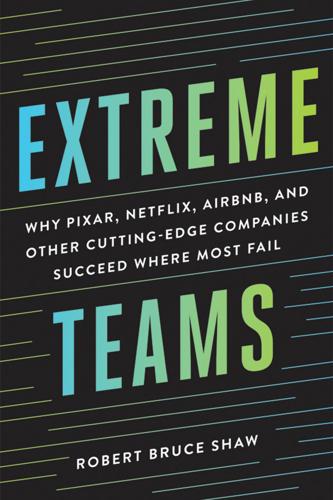
Extreme Teams: Why Pixar, Netflix, AirBnB, and Other Cutting-Edge Companies Succeed Where Most Fail
by
Robert Bruce Shaw
,
James Foster
and
Brilliance Audio
Published 14 Oct 2017
See his book Social Interaction Systems: Theory and Measurement(London: Transaction Publishers, 2001). Later work focuses on the concept of group cohesion and how it impacts performance, as noted above. 50Google bought Fadell’s firm for $3.2 billion in 2014. Fadell departed Google in 2016. 51See Connie Loizos, “Is Tony Fadell in Nest’s Way?” Techcrunch, March 30, 2016. Also see Lydia Dishman, “What’s Going on at Nest?” Fast Company, February 17, 2016. 52Steve Lohr, “Tony Fadell Steps Down Amid Tumult at Nest, a Google Acquisition,” New York Times, March 3, 2016. 53There are cases where firms experience a crisis, identify the need to change their cultures, and then fail to do so. NASA, after the Challenger space shuttle disaster, claimed that it was going to become a “safety first” culture where its employees felt comfortable voicing any concerns they had with the safety of a mission.
…
An excessive drive to deliver can come from the senior leaders of a company, from a team’s leader, or from the team members themselves. In many cases, it is a combination of all three factors. The challenge is delivering results without creating a culture that is too harsh—a culture where people compete with each other in unproductive ways or live in constant fear of losing their jobs. Take the case of Tony Fadell, who was a highly successful executive at Apple before starting the firm Nest Labs (which produces “smart” thermostats, smoke detectors, and security systems). Fadell has a reputation of pushing himself and his people hard—and he delivered at Apple and initially at his own firm.50 Then things started to unravel.
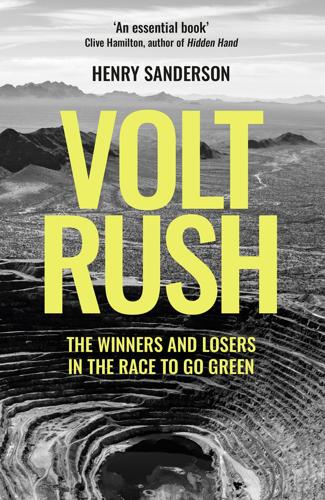
Volt Rush: The Winners and Losers in the Race to Go Green
by
Henry Sanderson
Published 12 Sep 2022
Notes Introduction 1 Tesla Q4 2019 earnings conference call transcript, 29 January 2020, Motley Fool, www.fool.com/earnings/call-transcripts/2020/01/30/tesla-inc-tsla-q4-2019-earnings-call-transcript.aspx (all URLs were checked on 27 January 2022). 2 Timperley, J., ‘How our daily travel harms the planet’, BBC Future, 18 March 2020, www.bbc.com/future/article/20200317-climate-change-cut-carbon-emissions-from-your-commute. 3 McKibben, B., ‘If the world ran on sun, it wouldn’t fight over oil’, Guardian, 18 September 2019, www.theguardian.com/commentisfree/2019/sep/18/climate-crisis-oil-war-iraq-saudi-attack-green-energy. 4 Fisher, A., ‘Tony Fadell’s next act? Taking on Silicon Valley – from Paris’, Wired, 19 October 2017, www.wired.com/story/tony-fadell-revenge-on-silicon-valley-from-paris/. Chapter 1 The Battery Age 1 Tesla Battery Day presentation, YouTube, 22 September 2020, www.youtube.com/watch?v=l6T9xIeZTds. 2 Ibid. 3 Ibid. 4 Watts, S., The People’s Tycoon, Henry Ford and the American Century (New York, Vintage, 2009), p. 288.
…
The electric vehicle (EV) revolution is green at its core but there are many choices to be made in the way it is executed that will affect both the environment and global power dynamics. Green energy evangelists tend to assume that a fossil-free future will be without conflicts. Bill McKibben, a well-known activist, wrote that ‘if the world ran on sun, it wouldn’t fight over oil’.3 This idea was repeated by Tony Fadell, the creator of the iPod, who told Wired magazine: ‘If we have energy storage technologies that are very cheap and very efficient, then we’re going to see wars stop, because no one is going to be fighting over oil reserves anymore.’4 Yet the demand for raw materials to build our clean energy infrastructure is as geopolitical as the age of oil.
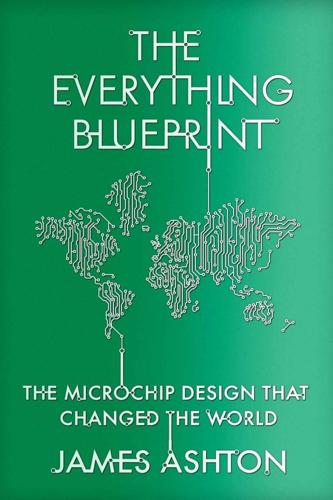
The Everything Blueprint: The Microchip Design That Changed the World
by
James Ashton
Published 11 May 2023
Efforts to reposition the PC as a ‘hub’, for collating music and images, explained the evolution of the iTunes service. Thoughts turned to creating Apple’s own device for people to carry their music on – something better than the crop of digital players already on the market that carried just a handful of songs. To lead development, the company hired Tony Fadell, a headstrong computer programmer and rock ’n’ roll fan who had grown up listening to Led Zeppelin, the Rolling Stones and Aerosmith. He had pitched his ideas for music players to various firms, including his former employer, the Dutch electronics giant Philips. The last portable device Apple had dreamed up was the Newton MessagePad and Apple still owned shares in Arm, whose designs lay at the heart of it.
…
The tech giant was keen to get to know its supplier’s supplier and the wider ecosystem it relied upon. With future models in mind, it needed chips that ran on reduced power, but that also enabled improved performance. A senior team of up to 15 people, both managerial and technical, fell into a rhythm of spending one week in the UK twice a year. The likes of Tony Fadell and Apple’s senior vice president Bob Mansfield would base themselves in London, often at the Courthouse Hotel, a five-star venue converted from a Grade II listed magistrates’ court just opposite the Liberty department store off Regent Street. Days would be spent travelling out of London to see Arm in Cambridge, as well as the supplier of the iPhone’s graphics processor, Imagination Technologies, which was based in Kings Langley, just north of Watford.
…
‘I am ashamed of myself for being so elated by big profits in the past,’ said Son.12 The work towards listing Arm’s shares on Nasdaq continued. During autumn 2022, Arm remade its board with Wall Street squarely in mind, recruiting former executives from AOL, Intel and Qualcomm. Most eye-catching was the appointment of Tony Fadell, the engineer who secured Arm’s second wave of success by bringing it into Apple’s category-defining family of devices starting with the iPod in 2001, and then campaigned to keep it there when Steve Jobs’ eye was drawn by Intel. Fadell described Arm as ‘silicon’s lingua franca’ and said he would ‘help ensure every future builder is enabled by this essential company’.

Creative Selection: Inside Apple's Design Process During the Golden Age of Steve Jobs
by
Ken Kocienda
Published 3 Sep 2018
But Purple was different. The stakes were higher—Steve Jobs was watching obsessively. As a new hardware product with the potential to rival and cannibalize the sales of the hottest Apple product of the day, the iPod, there had been an intense competition to be at the center of what might be the next big thing. Tony Fadell, the senior vice president of iPod development, had wanted the phone software to be in his domain. Scott Forstall thought he could do better, and these two had engaged in an executive-level contest to own the future of Purple software development. Scott won the tussle by assigning Henri and a couple of software engineers to develop a platform that borrowed as much from the Mac as possible but replaced AppKit with a brand-new multitouch-aware user interface system called UIKit.
…
My keyboard would be a part of the overall impression, and Phil was confused rather than convinced. The derby-winning keyboard with some modifications to make it more full-featured. The shift and delete keys made way for a return key and a key to display numbers and punctuation. A couple days later, Scott and I repeated the demo performance for Tony Fadell, the executive in charge of the iPod division. I had never met Tony before either, but I didn’t have to know him to see how preoccupied he was. When he walked over to the conference room table with my demo on it, he barely glanced at my keyboard. He didn’t ask any questions. Then he tried my software, but he couldn’t have typed more than a word or two.
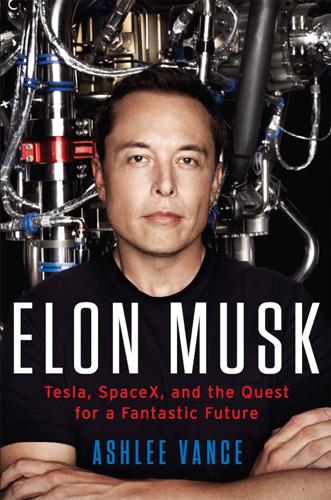
Elon Musk: Tesla, SpaceX, and the Quest for a Fantastic Future
by
Ashlee Vance
Published 18 May 2015
In the evenings, Musk headed to Rocket Science Games, a start-up based in Palo Alto that wanted to create the most advanced video games ever made by moving them off cartridges and onto CDs that could hold more information. The CDs would in theory allow them to bring Hollywood-style storytelling and production quality to the games. A team of budding all-stars who were a mix of engineers and film people was assembled to pull off the work. Tony Fadell, who would later drive much of the development of both the iPod and iPhone at Apple, worked at Rocket Science, as did the guys who developed the QuickTime multimedia software for Apple. They also had people who worked on the original Star Wars effects at Industrial Light & Magic and some who did games at LucasArts Entertainment.
…
Smartphones were revolutionary because of the ways they allowed hardware, software, and services to work in unison. This was a mix that favored the skills of Silicon Valley. The rise of the smartphone led to a massive industrial boom in which Apple became the most valuable company in the country, and billions of its clever devices were spread all over the world. Tony Fadell, the former Apple executive credited with bringing the iPod and iPhone to market, has characterized the smartphone as representative of a type of super-cycle in which hardware and software have reached a critical point of maturity. Electronics are good and cheap, while software is more reliable and sophisticated.
…
Tesla’s engineers unpacked it furiously, installed the battery pack, and then let Musk take it for a spin. About twenty Tesla engineers jumped in prototype vehicles and formed a convoy that followed Musk around Palo Alto and Stanford. *At some point from late 2007 to 2008, Musk also tried to hire Tony Fadell, an executive at Apple who is credited with bringing the iPod and iPhone to life. Fadell remembered being recruited for the CEO job at Tesla, while Musk remembered it more as a chief operating officer type of position. “Elon and I had multiple discussions about me joining as Tesla’s CEO, and he even went to the lengths of staging a surprise party for me when I was going to visit their offices,” Fadell said.

Surveillance Valley: The Rise of the Military-Digital Complex
by
Yasha Levine
Published 6 Feb 2018
Who would write the rules and laws in this hyperconnected future? How would people make their voices heard? Who would own all those sensors and controllers embedded in our hamstrings and boats? Fadell didn’t address these issues. His vision seemed to take for granted that this new world would be kind and safe. Tony Fadell, “Nest CEO Tony Fadell on the Future of the Internet,” Wall Street Journal, April 26, 2015. Chapter 6 1. Glenn Greenwald, Ewen MacAskill, and Laura Poitras, “Edward Snowden: The Whistleblower behind the NSA Surveillance Revelations,” Guardian, June 11, 2013. 2. Ewen MacAskill, “Edward Snowden, NSA Files Source: ‘If They Want to Get You, in Time They Will,’” Guardian, June 10, 2013. 3.
…
Richard Waters, “Google Eyes Better City Life for Billions,” Financial Times, June 11, 2015. 156. Matt Novak, “Google’s Parent Company (Probably) Wants to Build a City from Scratch,” Gizmodo, April 5, 2016, http://paleofuture.gizmodo.com/google-s-parent-company-probably-wants-to-build-a-cit-1769181473. 157. Tony Fadell, a former Apple executive and a connected-device guru who works as a personal adviser to Larry Page, sketched one vision of a future where Google’s technology benevolently ruled over and mediated everything and everyone in the world. “Tomorrow’s Internet will be everywhere and in everything. It will draw on massive amounts of data to augment our own intelligence.

The Entrepreneurial State: Debunking Public vs. Private Sector Myths
by
Mariana Mazzucato
Published 1 Jan 2011
It consisted of DARPA and industry leaders but was initiated (and funded) by DARPA in 1995, with the total government investment of $100 million during its existence. 6 Lower costs became visible when the price of a microchip for the Apollo program fell from $1,000 per unit to anywhere between $20 to $30 per unit within just few years (Breakthrough 2010). 7 Roland and Shiman (2002, 153) document Japan’s significant progress in the global chip market as having 0 per cent market share as opposed to the US’s 100 per cent share in 1970s, to 80 per cent global market share in 1986. 8 During his TV interview on 30 April 2012, Tony Fadell, who was in the original iPod design team, revealed the challenges Apple was facing with finding ways to replace buttons on the new gadget. Available from: http://www.theverge. com/2012/4/30/2988484/on-the-verge-005-tony-fadell-interview (accessed 12 April 2013). 9 Capacitive sensing is a technology that draws on the human body’s ability to act as a capacitor and store electric charge. 10 As a world-renowned expert on touch-screen technology, Bill Buxton provides an extensive archive of electronic devices with touch-screen applications.
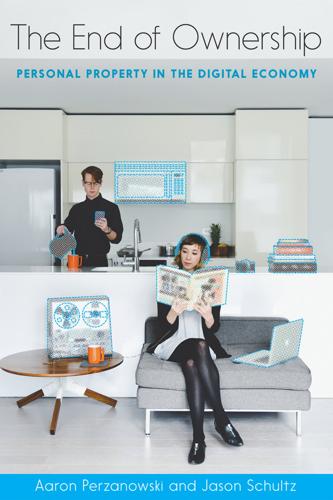
The End of Ownership: Personal Property in the Digital Economy
by
Aaron Perzanowski
and
Jason Schultz
Published 4 Nov 2016
Rob Price, “The Smart-Home Device That Google Is Deliberately Disabling Was Sold with a ‘Lifetime Subscription,’” Business Insider, April 5, 2016, http://www.businessinsider.com/revolv-smart-home-hubs-lifetime-subscription-bricked-nest-google-alphabet-internet-of-things-2016-4, accessed April 10, 2016. 9. Arlo Gilbert, “The Time That Tony Fadell Sold Me a Container of Hummus,” Medium, April 3, 2016, https://medium.com/@arlogilbert/the-time-that-tony-fadell-sold-me-a-container-of-hummus-cb0941c762c1#.nhl96qogu, accessed April 10, 2016. 10. “Apple Reinvents the Phone with iPhone,” Apple Press Info, Apple Inc., January 9, 2007, http://www.apple.com/pr/library/2007/01/09Apple-Reinvents-the-Phone-with-iPhone.html, accessed September 7, 2015. 11.
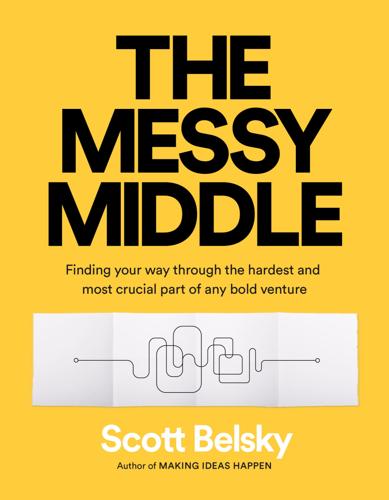
The Messy Middle: Finding Your Way Through the Hardest and Most Crucial Part of Any Bold Venture
by
Scott Belsky
Published 1 Oct 2018
—JOE GEBBIA, cofounder and chief product officer, Airbnb “Having been through the ups and downs of the messy middle many times, it’s critical to understand the challenges ahead. This insightful book empowers you to approach them head-on. Belsky’s powerful tool kit, based on hard-earned experiences, is an essential guide to building a compelling product, revolutionizing an organization, or growing your leadership abilities.” —TONY FADELL, inventor of the iPod, coinventor of the iPhone, founder and former CEO of Nest, principal at Future Shape Portfolio/Penguin An imprint of Penguin Random House LLC 375 Hudson Street New York, New York 10014 Copyright © 2018 by Scott Belsky Penguin supports copyright.
…
The question is whether you’re close to the tipping point of the project working and the difficulties you’re experiencing are just wearing you down, or if they’re rightfully making you question your true belief in the final vision. It’s extremely difficult to halt all progress and start all over again, but the boldest projects have multiple such “resets.” Perhaps one of the most challenging and important consumer product creations of our lifetime was the iPod, and subsequently the iPhone. So I asked Tony Fadell—who, before creating the thermostat company Nest, was brought into Apple by Steve Jobs to lead the iPod project, and then iPhone—about how his teams worked their way around so many dead ends. Tony explained, “I think there are two kinds of resets, one which is product spec based, not meeting the customer needs, and the other which is engineering based, not having a way to implement the plan with the current team or current technology inside or outside the company.
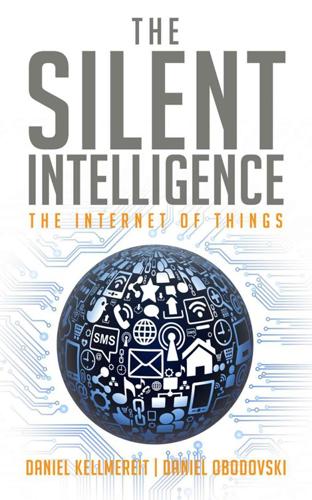
The Silent Intelligence: The Internet of Things
by
Daniel Kellmereit
and
Daniel Obodovski
Published 19 Sep 2013
And, of course, these machines will be connected wirelessly, and all data will be managed and stored in the cloud. One example in the smart home/connected devices arena is about to enter the mainstream. In our opinion, one of the most successful innovations of 2012 was the Nest smart thermostat, created by Tony Fadell, who ran the teams that created the iPod and the iPhone. Tony turned beautiful design and smart functionality into significant sales in Nest’s first year of commercial operations. Companies that offer home automation services, such as Control4 and Vivint (acquired in 2012 by Blackstone for $2 billion) are surging, and the decreasing cost of sensors, coupled with the growing ubiquity of smartphones, tablets, and high-speed wireless Internet, is enabling a raft of new applications.

Radical Technologies: The Design of Everyday Life
by
Adam Greenfield
Published 29 May 2017
The Google Plus social-networking service, around which all the other web properties were reorganized, at no small expense and degree of user inconvenience, radically unperformed expectations; launched in 2011, it’s wound up a quiet backwater in a world where Facebook and its properties dominate social media. It has been widely reported that the Nest team loathed founder Tony Fadell, and the division suffered from a string of embarrassing reversals during its time under the Google aegis;2 to date, the parent organization has been unable to leverage the data presumably flowing upstream from its thermostats and networked cameras. Boston Dynamics was put up for sale in March 2016, in what has been characterized as a corporate retreat from the entire field of robotics (and what was notably, again, a failure to integrate organizational cultures following an acquisition).3 The company’s autonomous car initiative has suffered a long wave of defections among senior personnel, and keeps rolling back the date at which it plans to introduce its driverless technology;4 it now estimates its vehicles will be fielded commercially no sooner than 2020.
…
Levesque, Ernest Davis and Leora Morgenstern, “The Winograd Schema Challenge,” Proceedings of the Thirteenth International Conference on Principles of Knowledge Representation and Reasoning, 2012, aaai.org/ocs/index.php/KR/KR12/paper/download/4492/4924. 12.Cara McGoogan, “Uber’s Self-Driving Cars Labelled ‘Not Ready for Streets’ After They Are Found to Cut Across Cycle Lanes,” Telegraph, December 20, 2016. 13.Timothy A. Salthouse, “When Does Age-Related Cognitive Decline Begin?,” Neurobiology of Aging, April 2009, Volume 30, Issue 4, pp. 507–14. 10Radical technologies 1.Bruce Sterling and Jon Lebkowsky, “Topic 487: State of the World 2016,” The WELL, January 3, 2016, well.com. 2.Mark Bergen, “Nest CEO Tony Fadell Went to Google’s All-Hands Meeting to Defend Nest. Here’s What He Said,” Recode, April 13, 2016. f 3.Brad Stone and Jack Clark, “Google Puts Boston Dynamics Up for Sale in Robotics Retreat,” Bloomberg Technology, March 17, 2016. 4.John Markoff, “Latest to Quit Google’s Self-Driving Car Unit: Top Roboticist,” New York Times, August 5, 2016. 5.Mark Harris, “Secretive Alphabet Division Funded by Google Aims to Fix Public Transit in US,” Guardian, June 27, 2016. 6.Siimon Reynolds, “Why Google Glass Failed: A Marketing Lesson,” Forbes, February 5, 2015. 7.Rajat Agrawal, “Why India Rejected Facebook’s ‘Free’ Version of the Internet,” Mashable, February 9, 2016. 8.Mark Zuckerberg, “The technology behind Aquila,” Facebook, July 21, 2016, facebook.com/notes/mark-zuckerberg/the-technology-behind-aquila/10153916136506634/. 9.Mari Saito, “Exclusive: Amazon Expanding Deliveries by Its ‘On-Demand’ Drivers,” Reuters, February 8, 2016. 10.Alan Boyle, “First Amazon Prime Airplane Debuts in Seattle After Secret Night Flight,” GeekWire, August 4, 2016. 11.Farhad Manjoo, “Think Amazon’s Drone Delivery Idea Is a Gimmick?

User Friendly: How the Hidden Rules of Design Are Changing the Way We Live, Work & Play
by
Cliff Kuang
and
Robert Fabricant
Published 7 Nov 2019
Today, as many linguists argue, emojis are redefining the way we communicate. 1999: TWO-SECOND REWIND, Paul Newby TiVo heralded a new era for TV and digital video, and, in addition to ad skipping, one of its earliest and most loved features was the two-second rewind. Its invention sprang from observing users watching TV and wondering what someone had just said. 2001: APPLE IPOD, Jony Ive, Tony Fadell, and Phil Schiller Just like the Sony Walkman in the late 1970s, the iPod ushered in a wave of gadget adoption that was driven by user-experience innovations rather than new functionality. The iPod click wheel embodied Apple’s long-held belief in the seamless integration of hardware and software.
…
It’s an open question whether we can wean ourselves off them, and whether we want to. 2009: LIKE BUTTON, Justin Rosenstein, Leah Pearlman, Aaron Sittig, Mark Zuckerberg, and others The most successful button in history, the Like button made it almost frictionless for users to act on even the faintest twinge of affection or animosity; multiplied, that signal would shape the information diet of billions. The Like button introduced a new layer of social exchange that society hadn’t seen before; and it proved once again the power of feedback to shape our psyches. 2011: NEST LEARNING THERMOSTAT, Tony Fadell, Ben Filson, and Fred Bould The Nest Learning Thermostat represented a milestone in applying the sort of user-friendly design approach we associate with high-end devices such as the iPhone to the mundane appliances we take for granted. Like the Ford Fusion dashboard, the Nest thermostat incorporates subtle behavioral nudges intended to make the product more convenient to use as well as more environmentally sustainable.

WTF?: What's the Future and Why It's Up to Us
by
Tim O'Reilly
Published 9 Oct 2017
A more recent demonstration of how old thinking holds back even smart entrepreneurs is how long it took for the Amazon Echo to arrive, given that speech recognition has been a feature of smartphones since the 2011 launch of Apple’s Siri intelligent agent. Yet it was Amazon’s Alexa, not Siri or Google, that brought a seemingly minor change that made all the difference: Alexa was the first smart agent always listening to your commands without the need to first touch a button. Tony Fadell, one of the creators of the original iPod and the founder and former CEO of Nest, the company bought by Google for $3.4 billion to be the heart of its push into the connected home, gave me a clue when I ribbed him about Amazon stealing a huge march on him. “Can you imagine,” he asked, “what the backlash would have been if Google had put out a connected home device that was always listening to you?”
…
Much as he saw in 1998 that it was time to cut through consumer fears about stored credit cards, and that you could create a far better user experience if you pushed the boundaries a little bit, he saw that the time was right for an always-listening intelligent agent in the home. This is a key lesson for every entrepreneur. Ask yourself: What is unthinkable? And if, like Tony Fadell, you aren’t ready to push past that boundary of unthinkability because you believe the market isn’t ready, you can still prepare. Keep waiting for the missing pieces of the puzzle to arrive. Even if you aren’t the one to push that boundary, once someone does it successfully, there’s a huge opportunity for a fast follower.

Thinking Machines: The Inside Story of Artificial Intelligence and Our Race to Build the Future
by
Luke Dormehl
Published 10 Aug 2016
And there are smart security cameras, smart kitchen scales, smart light bulbs, smart toilets, smart nappies and even smart toothbrushes. The most prominent smart device company, Nest Labs, was acquired by Google in January 2014 for a jaw-dropping $3.2 billion in cash. Founded by former Apple employees Matt Rogers and iPod creator Tony Fadell, it builds a range of connected smart devices, chief among which is a smart thermostat, designed to ‘learn’ its user’s habits over time and adjust itself accordingly. What makes these devices ‘smart’ is a combination of sensors, Artificial Intelligence algorithms and constant Internet connectivity via Wi-Fi.

The New Class Conflict
by
Joel Kotkin
Published 31 Aug 2014
But this failure barely threatens the company, whose last quarterly revenues neared $17 billion, whose cash on hand exceeds $56.5 billion, and whose 2014 market cap topped $400 billion.69 Indeed, if any of the tech powers is to become a full-fledged keiretsu, it’s likely to be Google. In addition to their other ventures, Google’s recent acquisition of Nest, a company founded by Apple alum Tony Fadell, brings Google into the “smart home” marketplace, part of the so-called “Internet of things,” with its almost infinite capacity for ever greater information hauls from your once “dumb,” but at least private, household appliances.70 In splendid keiretsu fashion, the acquisition also helped Kleiner Perkins, one of the early investors in both Google and Amazon, gain a return of twenty times their original investment.71 In the process, as industry veteran Michael Mace observes, Google has stopped being a “unified product company” and is turning instead into what he calls “a post-modern conglomerate.”

Frugal Innovation: How to Do Better With Less
by
Jaideep Prabhu Navi Radjou
Published 15 Feb 2015
Essentially, the device can reprogramme itself. Boasting an elegant, simple, intuitive user interface – only current room temperature is displayed in bold font – the device can be set up in just 1 minute and controlled remotely through a smartphone. The device’s plug-and-play ease of use is no accident. Nest was co-founded by Tony Fadell, who created the iPod while at Apple. Although the Nest costs $250, it saves users an average of $173 annually in energy bills. Furthermore, a Nest-commissioned study found that southern Californians who used the learning thermostats saved over 11% of alternating current (AC)-related energy. The Nest device helps consumers adopt more eco-friendly behaviour by: E-mailing users a monthly energy report.
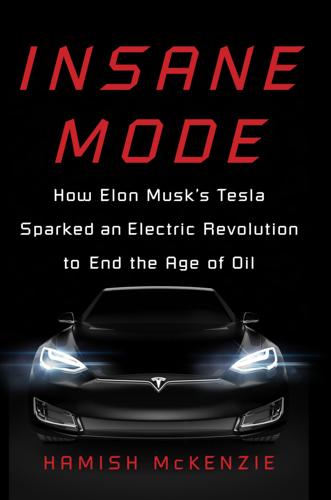
Insane Mode: How Elon Musk's Tesla Sparked an Electric Revolution to End the Age of Oil
by
Hamish McKenzie
Published 30 Sep 2017
Musk had his own view of the situation. “We always jokingly call Apple the ‘Tesla Graveyard,’” he said. “If you don’t make it at Tesla, you go work at Apple. I’m not kidding.” Steve Jobs had floated the idea of making a car in several discussions in 2008, according to former Apple vice president Tony Fadell, who went on to start the smart-devices company Nest, which was eventually acquired by Google (and which he left in 2016). Jobs and Fadell had discussed the proposition during a few walks, Fadell told an interviewer in 2015. “A car has batteries; it has a computer; it has a motor; and it has mechanical structure.

Revolution Française: Emmanuel Macron and the Quest to Reinvent a Nation
by
Sophie Pedder
Published 20 Jun 2018
That year saw 590 rounds of capital-raising in France, more than any country in Europe. Venture capitalists in London, who had until then shied away from Paris, became bullish about France for the first time. Sheryl Sandberg, COO of Facebook, said the country now had ‘some of the most innovative technology companies in the world’.14 Tony Fadell, the inventor of the Apple iPod, moved to Paris to work with entrepreneurs in the French capital. In 2009, he said, French corporate life was all about big, old companies, and ‘felt like the Dark Ages’. Now, he declares with all the passion of the convert: ‘I’m telling everyone, “Do you know what’s going on here?”
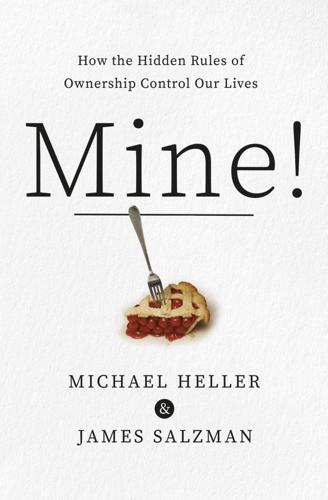
Mine!: How the Hidden Rules of Ownership Control Our Lives
by
Michael A. Heller
and
James Salzman
Published 2 Mar 2021
“We wish you luck”: Suw Charman-Anderson, “Amazon Ebooks Are Borrowed, Not Bought,” Forbes, October 23, 2012. All Revolvs in the world: Cory Doctorow, “Google Reaches into Customers’ Homes and Bricks Their Gadgets,” Boing Boing, April 5, 2016. “Which hardware will Google”: Arlo Gilbert, “The Time That Tony Fadell Sold Me a Container of Hummus,” Arlo Gilbert, April 3, 2016. But it is a bait-and-switch: To explore this theme further, see Aaron Perzanowski and Jason Schultz, The End of Ownership: Personal Property in the Digital Economy (Cambridge, Mass.: MIT Press, 2016). believe they own digital content: David Lazarus, “You Don’t Really ‘Buy’ Digital Goods,” Los Angeles Times, May 13, 2016.
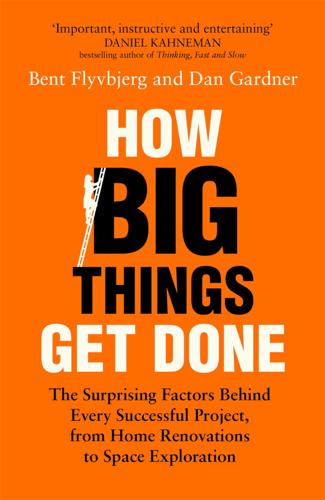
How Big Things Get Done: The Surprising Factors Behind Every Successful Project, From Home Renovations to Space Exploration
by
Bent Flyvbjerg
and
Dan Gardner
Published 16 Feb 2023
Bowman, Boeing 747: A History (Barnsley, UK: Pen and Sword Aviation, 2015); Stephen Dowling, “The Boeing 747: The Plane That Shrank the World,” BBC, June 19, 2020, https://www.bbc.com/future/article/20180927-the-boeing-747-the-plane-that-shrank-the-world. 10. Cited by Patrick Collison based on personal communication with Tony Fadell at https://patrickcollison.com/fast; Walter Isaacson, Steve Jobs (New York: Simon & Schuster, 2011), 384–90. 11. Jason Del Rey, “The Making of Amazon Prime, the Internet’s Most Successful and Devastating Membership Program,” Vox, May 3, 2019, https://www.vox.com/recode/2019/5/3/18511544/amazon-prime-oral-history-jeff-bezos-one-day-shipping. 12.

Digital Wars: Apple, Google, Microsoft and the Battle for the Internet
by
Charles Arthur
Published 3 Mar 2012
Apple however had a way around the transfer speed problem: a technology called FireWire that it had developed to transfer video from professional digital movie cameras. FireWire shifted data 30 times faster than USB 1.1. Rubinstein headed a crash programme to build the iPod, bringing in outside help in the form of an engineer called Tony Fadell who had been hawking the idea of a handheld music player around Silicon Valley, without success, and acquiring software from outside companies. Apple signed a contract with Toshiba giving it exclusive access to those tiny hard drives for a limited period after a new product launch; nobody else would be able to mimic it.

Machines of Loving Grace: The Quest for Common Ground Between Humans and Robots
by
John Markoff
Published 24 Aug 2015
Gregg Zachary and I have been both competitors and collaborators for decades, and he remains a close friend with an encyclopedic knowledge of the impact of technology on society. John Kelley, Michael Schrage, and Paul Saffo are also friends who have each had innumerable conversations with me about the shape and consequences of future computing technologies. I have for years had similar conversations with Randy Komisar, Tony Fadell, and Steve Woodward on long bike rides. Jerry Kaplan, who has returned to the world of artificial intelligence after a long hiatus, has real insight into the way it will change the modern world. John Brockman, Max Brockman, and Katinka Matson are more than wonderful agents; they are good friends.

Samsung Rising: The Inside Story of the South Korean Giant That Set Out to Beat Apple and Conquer Tech
by
Geoffrey Cain
Published 15 Mar 2020
In February 2006, David Tupman, Apple’s vice president for iPhone and iPod engineering, realized that he was a year away from shipping the first iPhone—but he didn’t have the main processor ready, or even a time line for creating one. Fortunately, Apple’s hardware engineers were already getting their chips for the iPod from Samsung. Tony Fadell, one of the leaders of the iPod team, asked Hwang’s team if they could produce a chip for Apple to the iPhone’s specifications. Hwang’s employees could—by modifying a chip currently used for a cable box. Apple gave Samsung an impossible deadline: to create a chip for the iPhone in five months.
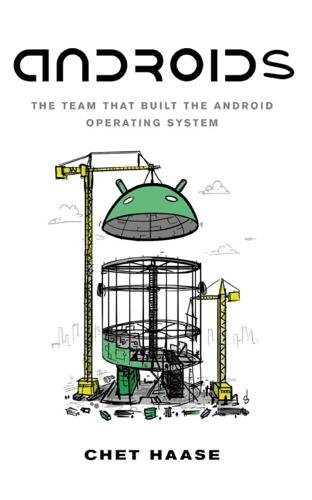
Androids: The Team That Built the Android Operating System
by
Chet Haase
Published 12 Aug 2021
Years after hiring Steve into Apple, he worked for Steve at Microsoft. Later, he co-founded Skia with Mike Reed (another Apple colleague), which was acquired by Android, and Cary again found himself working for Steve. Be nice to your colleagues — you will work with them again someday. And maybe even several somedays. 340 Tony Fadell ran the iPod group at Apple for many years and later co-founded Nest. 341 “you there?” 342 Mobile World Congress is a huge annual trade show for the mobile industry. 343 Years later, Steve ended up back at Google, running the software division of Motorola. “My biggest contribution was to abandon years of accumulated cruft and modifications and put Motorola on a pure ‘vanilla’ software path.

Stolen Focus: Why You Can't Pay Attention--And How to Think Deeply Again
by
Johann Hari
Published 25 Jan 2022
The inventors, creators—it’s me, it’s Mark [Zuckerberg], it’s Kevin Systrom on Instagram, it’s all of these people—understood this consciously. And we did it anyway.” He added: “God only knows what it’s doing to our children’s brains.” Chamath Palihapitiya, who had been Facebook’s vice president of growth, explained in a speech that the effects are so negative that his own kids “aren’t allowed to use that shit.” Tony Fadell, who co-invented the iPhone, said: “I wake up in cold sweats every so often thinking, what did we bring to the world?” He worried that he had helped create “a nuclear bomb” that can “blow up people’s brains and reprogram them.” Many Silicon Valley insiders predicted that it would only get worse.
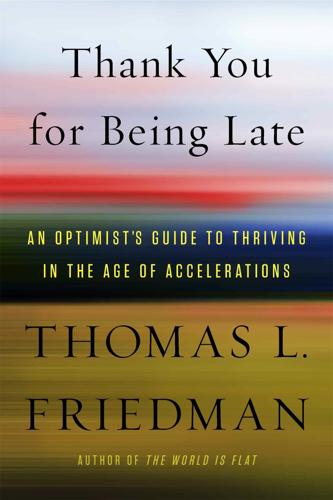
Thank You for Being Late: An Optimist's Guide to Thriving in the Age of Accelerations
by
Thomas L. Friedman
Published 22 Nov 2016
So, at a minimum, our educational systems must be retooled to maximize these needed skills and attributes: strong fundamentals in writing, reading, coding, and math; creativity, critical thinking, communication, and collaboration; grit, self-motivation, and lifelong learning habits; and entrepreneurship and improvisation—at every level. The Compounding Solution Fortunately, new technology tools will aid this endeavor. The new social contracts we need between government, business, the social sector, and workers will be far more feasible if we find creative ways—to borrow a phrase from Nest Labs’ founder, Tony Fadell—to turn “AI into IA.” In my rendering, that would be to turn artificial intelligence into intelligent assistance, intelligent assistants, and intelligent algorithms. Intelligent assistance involves leveraging artificial intelligence to enable the government, individual companies, and the nonprofit social sector to develop more sophisticated online and mobile platforms that can empower every worker to engage in lifelong learning on their own time, and to have their learning recognized and rewarded with advancement.

Palo Alto: A History of California, Capitalism, and the World
by
Malcolm Harris
Published 14 Feb 2023
But no matter how stylish the design, the iMac couldn’t elevate Apple out of niche status within the big bad PC market. The company needed a new popular hook, one (like VisiCalc back in the Apple II days) that was exclusive, that no one could clone. Rather than develop the next great idea, Jobs decided to buy one, from a celebrated electronics inventor-engineer named Tony Fadell. Fadell began his own poorly timed start-up, Fuse, in 1999, hoping to ape Dell’s success with the direct-to-consumer model. His plan was for an MP3 player with a mini hard drive that connected easily to an online music store, but the dot-com bust dried up the VCs and Fadell began pitching established tech companies on the idea.